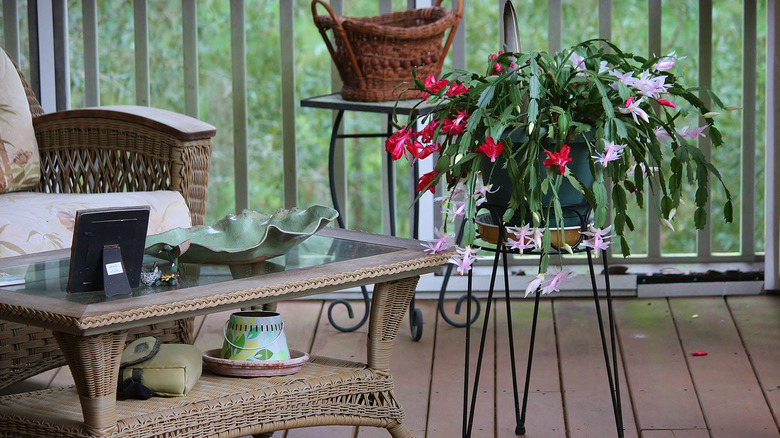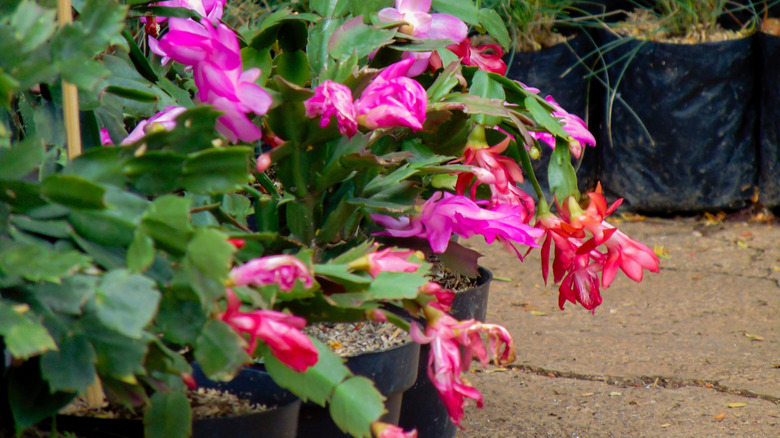Mistakes Everyone Makes When Moving A Christmas Cactus Outdoors
Fresh air, a light breeze, and a bit of unfiltered sun is just the trick to remind our bodies that the growing season is at hand. Our houseplants can reap similar benefits as we do from a summer stint outdoors. If your Christmas cactus (Schlumbergera) could use a shot in the figurative arm, taking it outside for a few months just might be the key. A bit of open air encourages better blooms later in the year, but simply plopping a pot on the patio on a warm day is not going to cut it if we want a healthy plant to stay that way.
An al fresco period may keep your Christmas cactus thriving year-round, but only if you pay close attention to the levels of sun, moisture, and temperature it's exposed to. Too much water, sunlight, and heat all can spell doom for your outdoor-dwelling Christmas cactus.
Also, just like we ease our toes into a chilly swimming pool, it's important to give your cactus a chance to get used to the change in its new environment. Patience is crucial during this time; spend between one and two weeks gradually increasing how much time it spends outside and how much sunlight it gets. Care for this houseplant by starting with a few hours of shade, and work toward more and more indirect sunlight each day.
Have a merry outdoor Christmas cactus
You can transform your patio with flowers and plants brought from indoors to out. But in order for your Christmas cactus to thrive after a summer outdoors, you've got to pick the right spot for it. Don't be fooled by the word "cactus;" not all of these plants love to bask in extreme heat. Christmas cacti really prefer temperatures between 60 and 70 degrees Fahrenheit. If the dog days of summer in your region bring extreme temps with them, be extra careful to provide your plants some shade.
As you'd expect, these cacti need arid conditions to thrive. Save your beautiful Christmas cactus from the threat of dreaded root rot by sheltering it from excessive rain and housing it in a pot with adequate drainage. Christmas cacti prefer light shade, and direct sunlight can scorch the plant.
Most sources warn that Christmas cacti shouldn't stay outdoors if nighttime temperatures are below 60 degrees Fahrenheit. The University of Florida shares that temperatures below this point can slow growth. However, the University also states that as long as temps don't dip below this point, plants exposed to around 50 degrees Fahrenheit show increased flowering. If you have a particularly robust Christmas cactus, this could be an interesting experiment for people living in places with cool nights.

